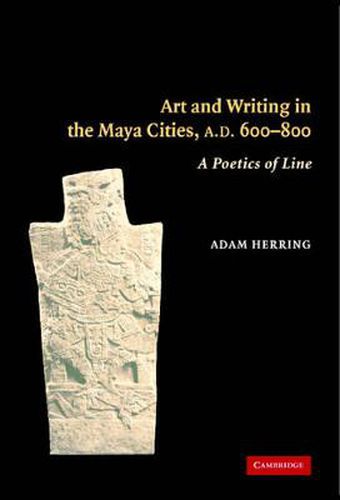Readings Newsletter
Become a Readings Member to make your shopping experience even easier.
Sign in or sign up for free!
You’re not far away from qualifying for FREE standard shipping within Australia
You’ve qualified for FREE standard shipping within Australia
The cart is loading…






Art and Writing in the Maya Cities, AD 600-800 examines an important aspect of the visual cultures of the ancient Maya in southern Mexico, Guatemala, Belize, and Honduras. During a critical period of cultural evolution, artistic production changed significantly, as calligraphy became an increasingly important formal element in Maya aesthetics and was used extensively in monumental building, sculptural programs and small-scale utilitarian objects. Adam Herring’s study analyzes art works, visual programs, and cultural sites of memory, providing an anthropologically-informed description of ancient Maya culture, vision, and artistic practice. An inquiry into the contexts and perceptions of the ancient Maya city, his book melds epigraphic and iconographic methodologies with the critical tradition of art-historical interpretation.
$9.00 standard shipping within Australia
FREE standard shipping within Australia for orders over $100.00
Express & International shipping calculated at checkout
Art and Writing in the Maya Cities, AD 600-800 examines an important aspect of the visual cultures of the ancient Maya in southern Mexico, Guatemala, Belize, and Honduras. During a critical period of cultural evolution, artistic production changed significantly, as calligraphy became an increasingly important formal element in Maya aesthetics and was used extensively in monumental building, sculptural programs and small-scale utilitarian objects. Adam Herring’s study analyzes art works, visual programs, and cultural sites of memory, providing an anthropologically-informed description of ancient Maya culture, vision, and artistic practice. An inquiry into the contexts and perceptions of the ancient Maya city, his book melds epigraphic and iconographic methodologies with the critical tradition of art-historical interpretation.